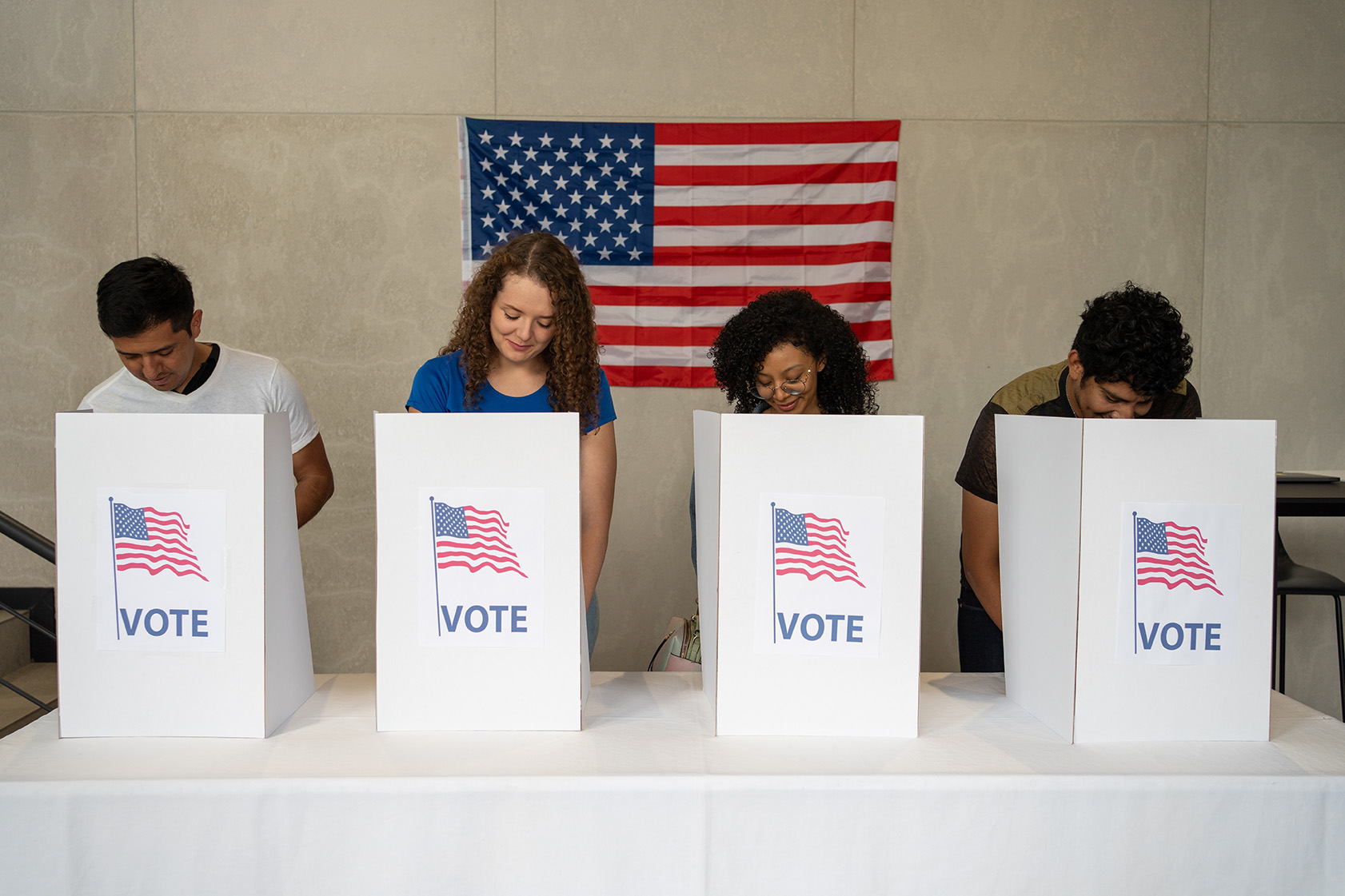UA recognized for student engagement in voting and elections

Civic engagement is important to students at The University of Akron (UA), and a new study shows that UA students vote at rates that are comparable to and, in some cases, slightly ahead of their peers from other colleges and universities.
Data from the National Study of Learning, Voting and Engagement (NSLVE), which was released this summer, examines UA’s student voting rates for the 2020 general election and 2014, 2018 and 2022 mid-term elections in context with national numbers.
Among the findings in the numbers for midterm and general elections since 2014 is that UA’s 2022 voting rate for all eligible voters was 35.3% compared to a 30.6% rate for all institutions participating in NSLVE.
The ALL IN Campus Democracy Challenge recently awarded UA its Silver Seal based on the University’s voting rate for 2022 as reported in the NSLVE results.
UA’s voting rate for the 2020 general election was 69%, which matches the average of all participating institutions. General election numbers are typically much higher than mid-term elections across all groups of voters.
“We are on par with or above the average on many things,” said Corie Steinke, assistant director for civic engagement and leadership programs in the Department of Student Life, including Zips Vote, a campus-wide initiative to encourage democratic participation in state and national elections by increasing access to voting resources and developing interest in civic engagement. Zips Vote is a nonpartisan coalition that invites students of all backgrounds and beliefs to enhance access to voting resources.
“That is very exciting for us and gives us a place to start,” Steinke added. “We know we don’t have a lot of ground to make up compared to the national average.”
How the data is gathered and assessed
This is the first time the University is participating in NSLVE. Participation may have had the added impact of UA’s designation as a Voter Friendly Campus and receipt of ALL IN’s Highly Established Action Plan Seal in addition to the Silver Seal. This honor, which was also announced this summer, recognizes higher education institutions with strong action plans to increase nonpartisan democratic engagement by promoting civic learning, political engagement and college student voter participation.
Action plans are assessed based on the Strengthening American Democracy Action Planning Guide (SADG) rubric.
UA had previously been named a Voter Friendly Campus with the “Progressing” designation.
The University opted to participate in NSLVE in order to close equity gaps found in voter participation and encourage broader engagement on campus. NSLVE results are broken down into demographics that include gender, race/ethnicity, type of institution, voting method, education level (undergraduate vs. graduate) and field of study. That will allow Steinke to look at where students are voting at a higher and lower rate, and to develop targeted programs that encourage engagement.
Participation is free and does not require students to provide additional information beyond what they already provide when they enroll. The NSLVE results are based on enrollment records that institutions submit to the National Student Clearinghouse (NSC) and publicly available voting files collected by L2, an independent firm that processes and analyzes voter data.
Student social security numbers are not used to identify students. Participating institutions receive only their data and national data. Around 1,200 institutions participate in NSLVE.
Demographic trends at UA include higher participation rates of students who are part-time, further along in their undergraduate careers or in graduate programs. UA’s most engaged student voters were in fields of study that included history, communications and journalism, legal professions and studies, and the social sciences.
The entire report can be viewed here.
Engaging UA students to vote this fall
UA’s voter engagement efforts were coordinated through Zips Vote. Steinke put together a coalition of student government and organization leaders who supported these efforts and spread the word to other students. Programming ramped up earlier this fall with a three-pronged push to register voters, provide education and training, and support students taking action to vote in the general election. Zips Vote partnered with the Akron Area League of Women Voters to help with the registration effort.
Zips Vote also offered drop-in educational democracy clinics and an opportunity for students to attend a statewide leadership summit. The group also developed nonpartisan registration and other voting information for faculty to include on course syllabi. An election night watch party will be held in the Jean Hower Taber Student Union.
For more information about the NSLVE results and voter engagement activities, visit Zips Vote.
Media Contact: Cristine Boyd; cboyd@uakron.edu; 330-972-6476
